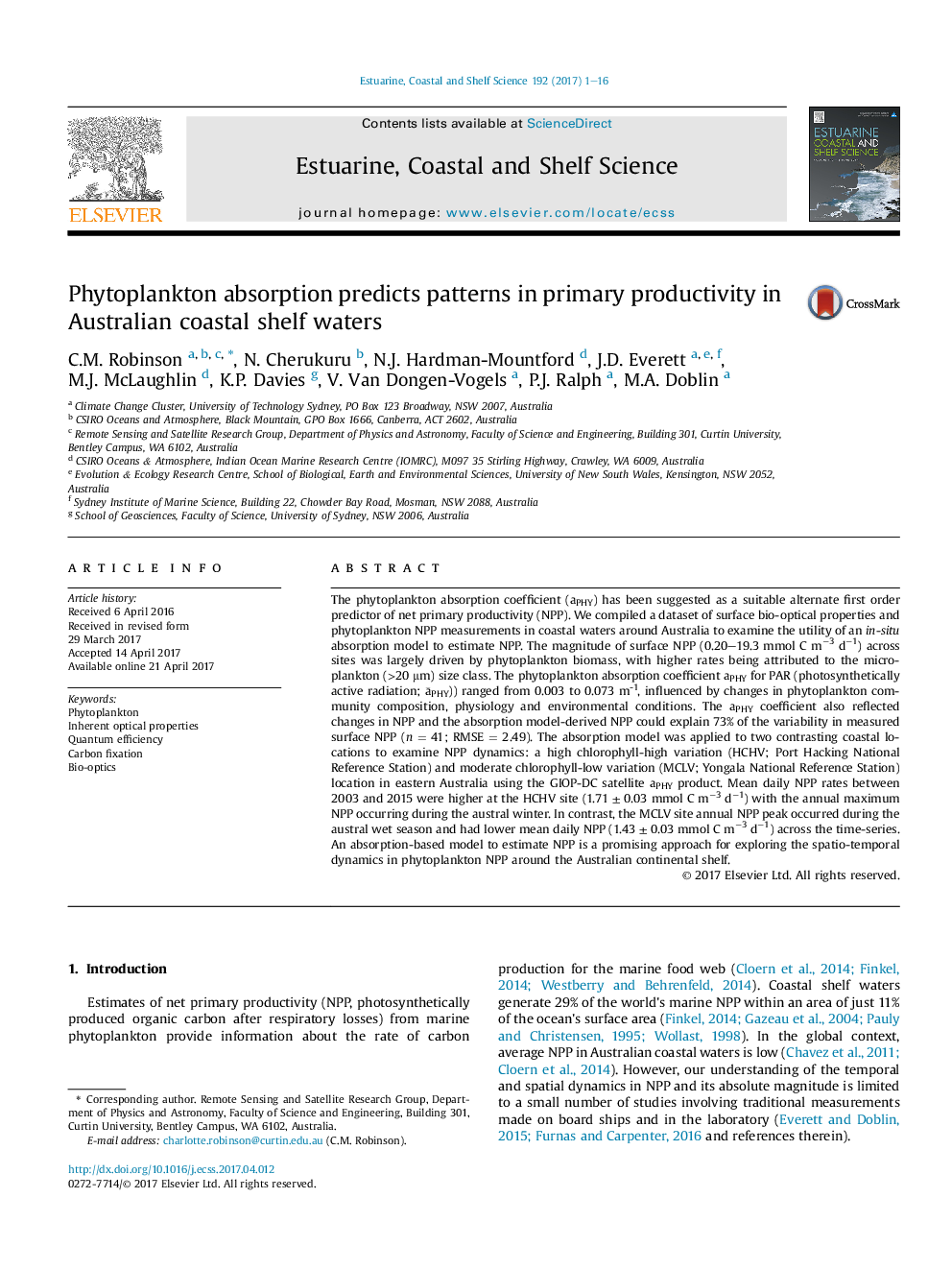| Article ID | Journal | Published Year | Pages | File Type |
|---|---|---|---|---|
| 5765159 | Estuarine, Coastal and Shelf Science | 2017 | 16 Pages |
Abstract
The phytoplankton absorption coefficient (aPHY) has been suggested as a suitable alternate first order predictor of net primary productivity (NPP). We compiled a dataset of surface bio-optical properties and phytoplankton NPP measurements in coastal waters around Australia to examine the utility of an in-situ absorption model to estimate NPP. The magnitude of surface NPP (0.20-19.3 mmol C mâ3 dâ1) across sites was largely driven by phytoplankton biomass, with higher rates being attributed to the microplankton (>20 μm) size class. The phytoplankton absorption coefficient aPHY for PAR (photosynthetically active radiation; ÄPHY)) ranged from 0.003 to 0.073 m-1, influenced by changes in phytoplankton community composition, physiology and environmental conditions. The aPHY coefficient also reflected changes in NPP and the absorption model-derived NPP could explain 73% of the variability in measured surface NPP (n = 41; RMSE = 2.49). The absorption model was applied to two contrasting coastal locations to examine NPP dynamics: a high chlorophyll-high variation (HCHV; Port Hacking National Reference Station) and moderate chlorophyll-low variation (MCLV; Yongala National Reference Station) location in eastern Australia using the GIOP-DC satellite aPHY product. Mean daily NPP rates between 2003 and 2015 were higher at the HCHV site (1.71 ± 0.03 mmol C mâ3 dâ1) with the annual maximum NPP occurring during the austral winter. In contrast, the MCLV site annual NPP peak occurred during the austral wet season and had lower mean daily NPP (1.43 ± 0.03 mmol C mâ3 dâ1) across the time-series. An absorption-based model to estimate NPP is a promising approach for exploring the spatio-temporal dynamics in phytoplankton NPP around the Australian continental shelf.
Related Topics
Physical Sciences and Engineering
Earth and Planetary Sciences
Geology
Authors
C.M. Robinson, N. Cherukuru, N.J. Hardman-Mountford, J.D. Everett, M.J. McLaughlin, K.P. Davies, V. Van Dongen-Vogels, P.J. Ralph, M.A. Doblin,
